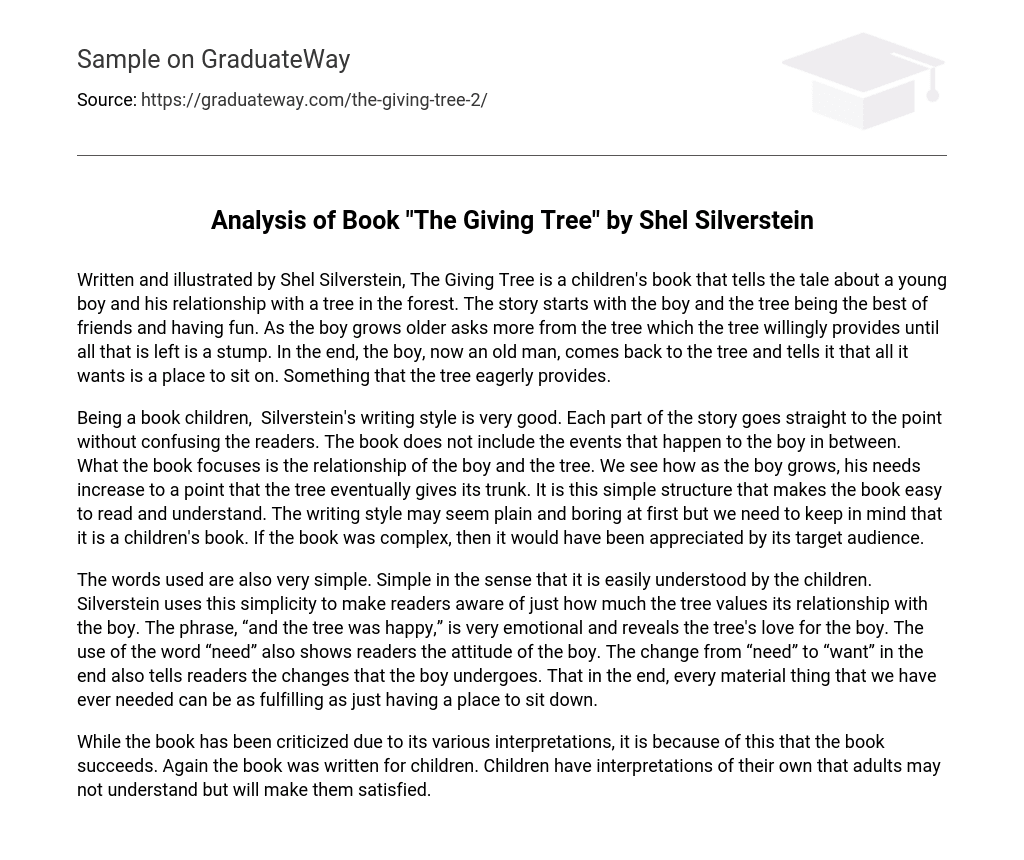Written and illustrated by Shel Silverstein, The Giving Tree is a children’s book that tells the tale about a young boy and his relationship with a tree in the forest. The story starts with the boy and the tree being the best of friends and having fun. As the boy grows older asks more from the tree which the tree willingly provides until all that is left is a stump. In the end, the boy, now an old man, comes back to the tree and tells it that all it wants is a place to sit on. Something that the tree eagerly provides.
Being a book children, Silverstein’s writing style is very good. Each part of the story goes straight to the point without confusing the readers. The book does not include the events that happen to the boy in between. What the book focuses is the relationship of the boy and the tree. We see how as the boy grows, his needs increase to a point that the tree eventually gives its trunk. It is this simple structure that makes the book easy to read and understand. The writing style may seem plain and boring at first but we need to keep in mind that it is a children’s book. If the book was complex, then it would have been appreciated by its target audience.
The words used are also very simple. Simple in the sense that it is easily understood by the children. Silverstein uses this simplicity to make readers aware of just how much the tree values its relationship with the boy. The phrase, “and the tree was happy,” is very emotional and reveals the tree’s love for the boy. The use of the word “need” also shows readers the attitude of the boy. The change from “need” to “want” in the end also tells readers the changes that the boy undergoes. That in the end, every material thing that we have ever needed can be as fulfilling as just having a place to sit down.
While the book has been criticized due to its various interpretations, it is because of this that the book succeeds. Again the book was written for children. Children have interpretations of their own that adults may not understand but will make them satisfied.





